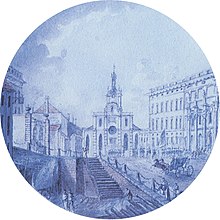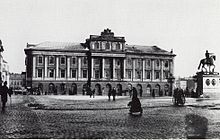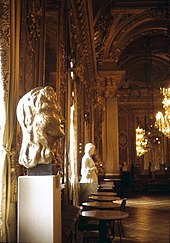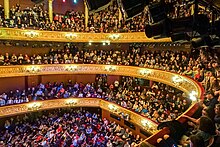
The Drottningholm Palace Theatre is an opera house located at Drottningholm Palace in Stockholm, Sweden. It is one of the few 18th century theatres in Europe that is still used as a theatre with its original stage machinery.
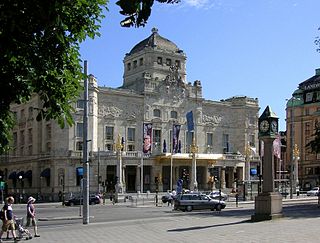
The Royal Dramatic Theatre is Sweden's national stage for "spoken drama", founded in 1788. Around one thousand shows are put on annually on the theatre's five running stages.
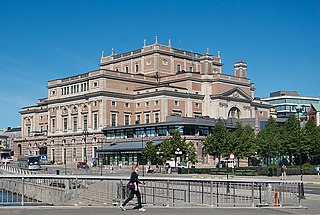
The Royal Swedish Ballet is one of the oldest ballet companies in Europe. Based in Stockholm, Sweden, King Gustav III founded the ballet in 1773 as a part of his national cultural project in response to the French and Italian dominance in this field; he also founded the Royal Swedish Opera and the Royal Dramatic Theatre. All of these were initially located in the old theatre of Bollhuset. The troupe was founded with the opening of the Royal Swedish Opera, which has served as its home since that time.

Edvard Armas Järnefelt, was a Finnish conductor and composer, who achieved some minor success with his orchestral works Berceuse (1904) and Praeludium (1900). He spent much of his conducting career at the Royal Swedish Opera in Stockholm, Sweden.

Caroline Frederikke Müller née Halle also known as Caroline Walther, was a Danish and later naturalized Swedish opera singer (mezzo-soprano). She was also active as an instructor at the Royal Dramatic Training Academy. She was a member of the Royal Swedish Academy of Music and a Hovsångare.

Elisabeth Olin née Lillström was a Swedish opera singer and a music composer. She performed the leading female role in the inauguration performance of the Royal Swedish Opera in 1773, and is referred to as the first Swedish opera prima donna. She was the first female to be made Hovsångerska (1773), and the first woman to become a member of the Royal Swedish Academy of Music (1782).

Bollhuset, also called Stora Bollhuset, Bollhusteatern, and Gamla Bollhuset at various times, was the name of the first theater in Stockholm, Sweden; it was the first Swedish theater and the first real theater building in the whole of Scandinavia. It was built in 1627 for ball sports and used in this way for forty years. The name Lejonkulan, however, was, in fact, the name of a different building, which was also used by the same theater in the 17th century.

Lovisa Sofia Augusti was a Swedish opera singer (soprano). She was regarded as one of the most noted opera singers of the Royal Swedish Opera during the Gustavian era. She was appointed Hovsångare in 1773 and inducted to the Royal Swedish Academy of Music in 1788.
Hedvig "Hedda" Katarina Hjortsberg also known as Hedda Koersner was a Swedish ballerina who starred for the Royal Swedish Ballet. She was the sister of the Swedish actor Lars Hjortsberg.
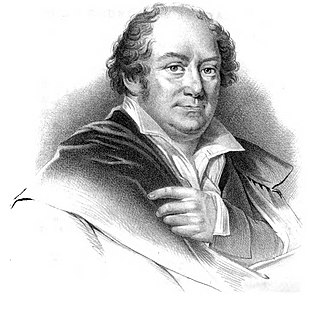
Lars Hjortsberg was a Swedish stage actor. He belonged to the pioneer generation of elite actors of the Royal Dramatic Theatre and has, alongside Emilie Högquist, been referred to as the most famous Swedish actor of the first half of the 19th-century.
Kungliga Hovkapellet is a Swedish orchestra, originally part of the Royal Court in Sweden's capital Stockholm. Its existence was first recorded in 1526. Since 1773 it is part of the Royal Swedish Opera's company.

Gustav III, also called Gustavus III, was King of Sweden from 1771 until his assassination in 1792. He was the eldest son of King Adolf Frederick and Queen Louisa Ulrika of Sweden.

Anna Maria Franziska "Charlotta" Almlöf was a Swedish stage actress. She belonged to the star actresses of the Royal Dramatic Theatre.

Johan Fredrik Berwald was a Swedish violinist, conductor and composer. He was a cousin of Franz Berwald and August Berwald.
Lawrence Renes is a Dutch-Maltese conductor.
Anna Lang, née Nordqvist was a Swedish court harpist.
Events from the year 1812 in Sweden

Eva Elin Rombo, née Karlsson, is a Swedish operatic soprano. In November 2013 she was named Hovsångerska.
John Otto Lundgren is a Swedish dramatic baritone opera singer.
Ferdinand Zellbell the Younger was a Swedish composer and a founding member of the Royal Swedish Academy of Music. He was organist at Storkyrkan, the main church of Stockholm, and chief conductor at Kungliga Hovkapellet. Arguably his most accomplished composition is an opera, Il Giudizio d'Aminta, written on the occasion of the birthday of future Empress Catherine the Great of Russia.



